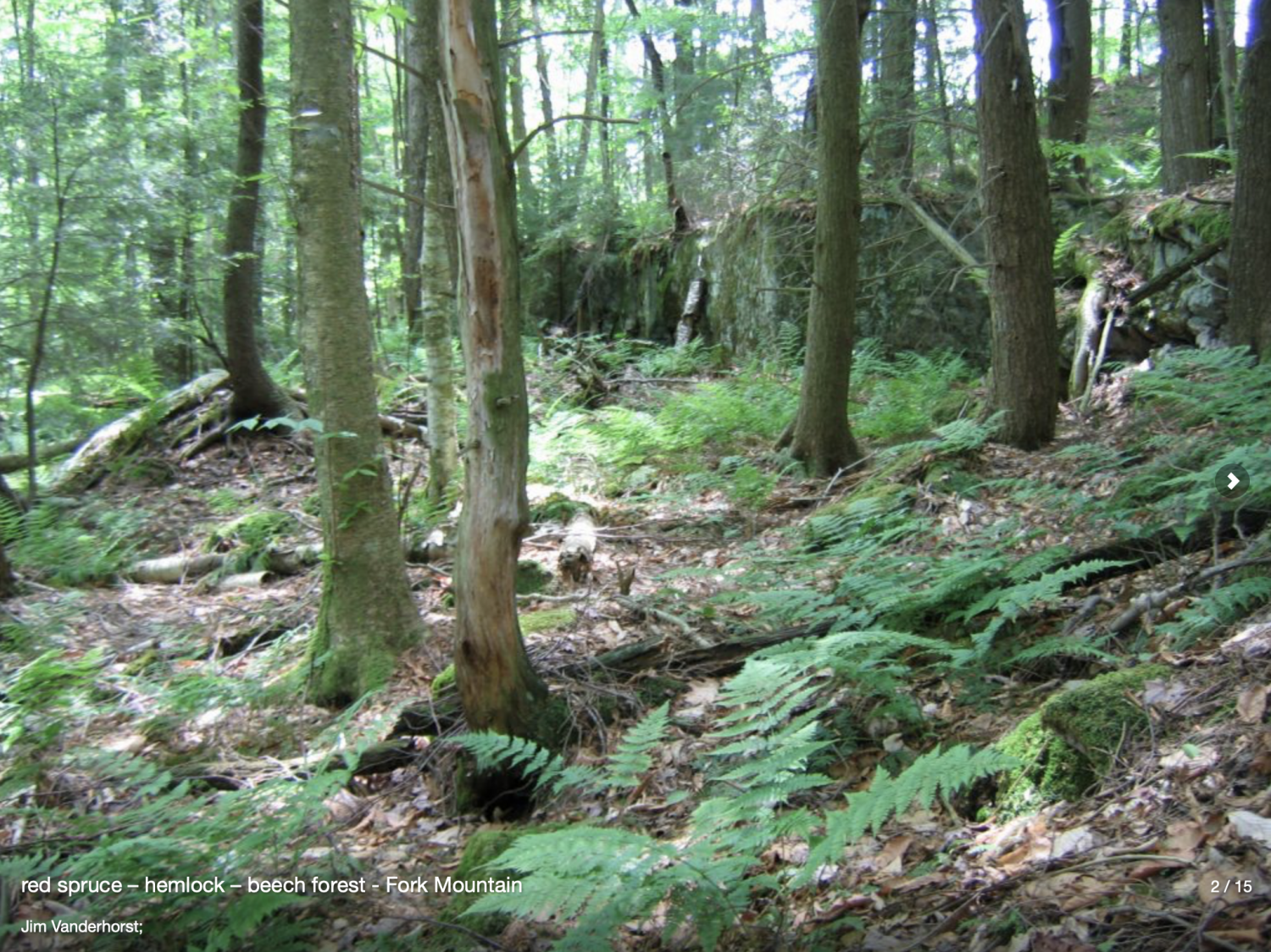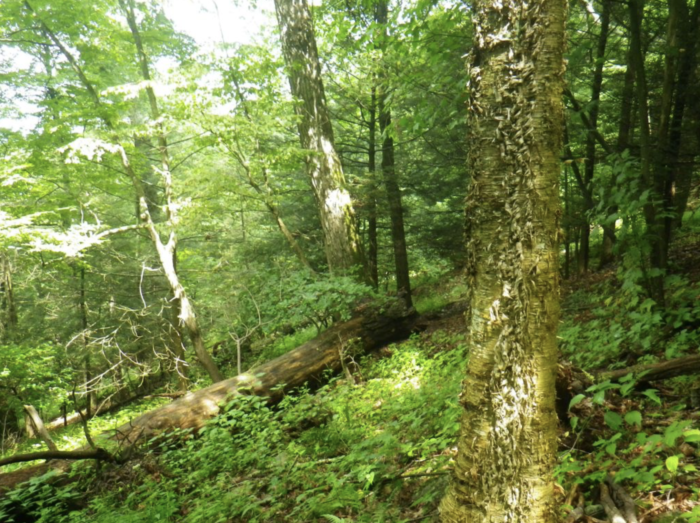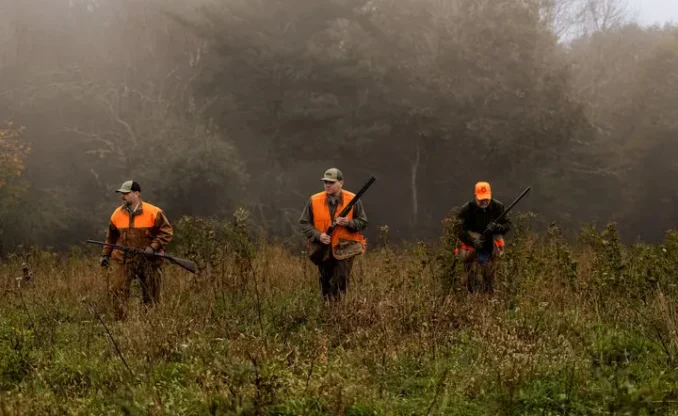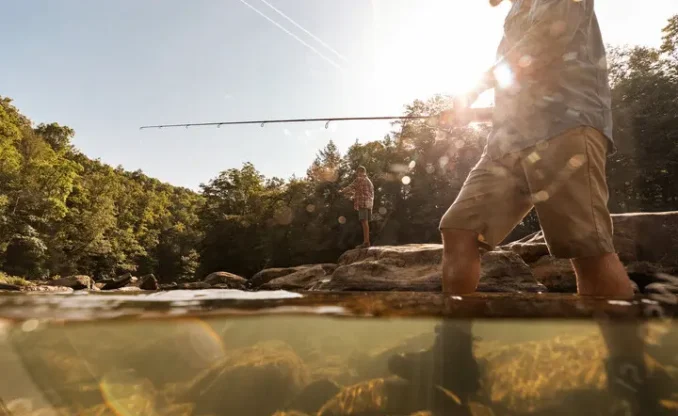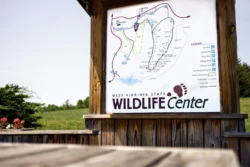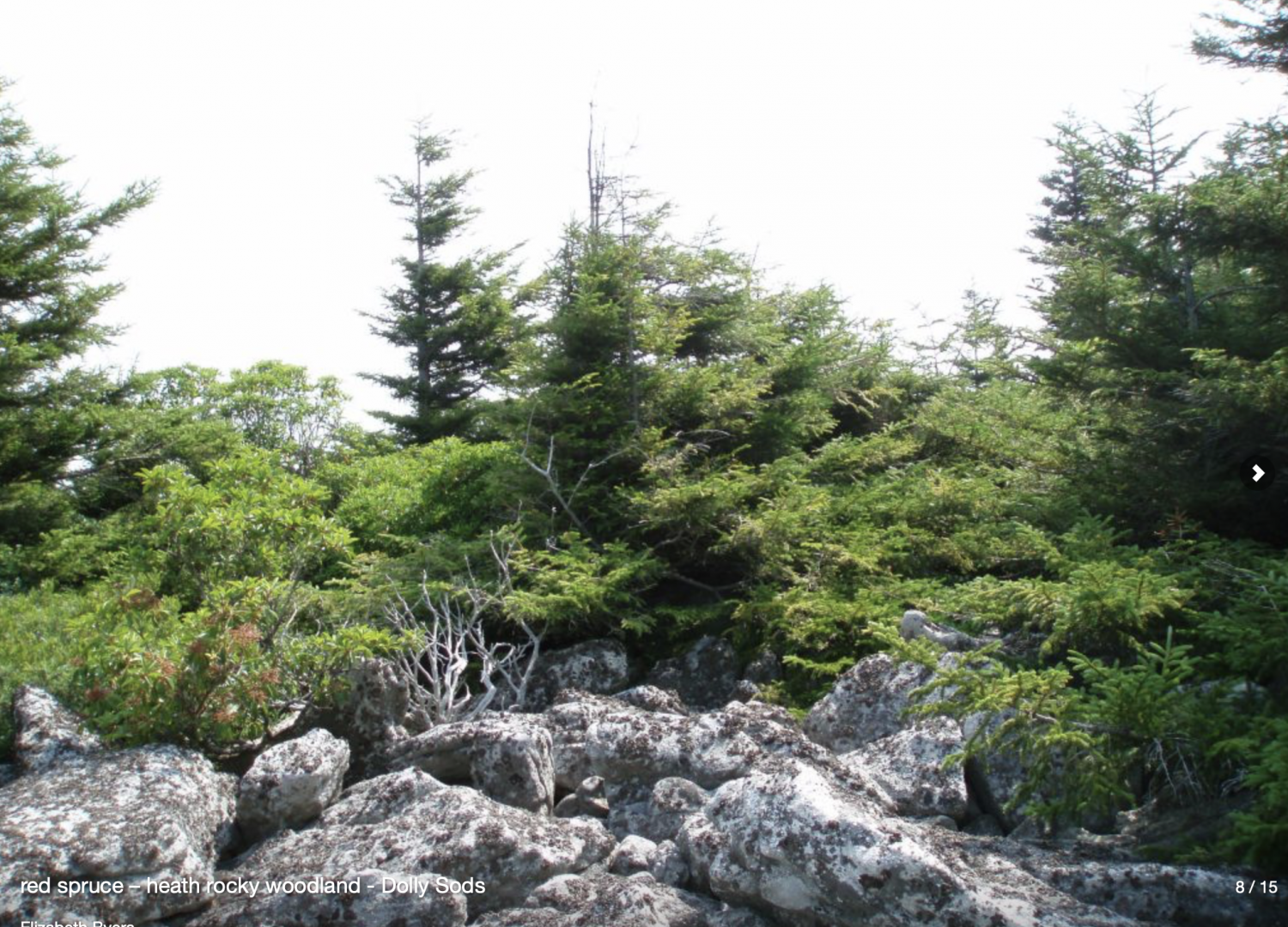Early explorers and lumbermen found vast acreages of virgin red spruce forests in the Allegheny Mountains that are now part of West Virginia. During the late 1800s and early 1900s these forests were decimated by logging and fire, but today they are expanding again into parts of their previous niche. Upland red spruce forests are emblematic of West Virginia’s high Allegheny Mountains and are home to a unique assemblage of wild, native plants and animals.
Ecological Description
These are upland, mixed evergreen-deciduous forests and woodlands dominated or codominated by red spruce (Picea rubens). Soils are usually cold, rocky, highly acidic, and often have deep organic horizons at the surface. Associated trees include eastern hemlock (Tsuga canadensis), yellow birch (Betula alleghaniensis), red maple (Acer rubrum), American beech (Fagus grandifolia), mountain ash (Sorbus americana), and black cherry (Prunus serotina). Common shrubs include mountain holly (Ilex montana), great laurel (Rhododendron maximum), striped maple (Acer pensylvanicum), highbush cranberry (Vaccinium erythrocarpum), and mountain laurel (Kalmia latifolia). The herb layer is characterized by species adapted to short, cool growing seasons, including intermediate woodfern (Dryopteris intermedia), mountain woodfern (Dryopteris campyloptera), mountain wood sorrel (Oxalis montana), Canada mayflower (Maianthemum canadense), and painted wakerobin (Trillium undulatum). Mosses and liverworts often have heavy cover over the rocky ground. Subterranean fungi called truffles grow in the deep organic soils.
Animals that need these habitats
Spruce Knob Threetooth (snail), Atlantis Fritillary (butterfly), Green Comma (butterfly), Bicolored Moth, Cheat Mountain Salamander, Northern Goshawk, Pine Siskin, Swainson’s Thrush, Olive-sided Flycatcher, Red Crossbill, Snowshoe Hare, West Virginia Northern Flying Squirrel.
Distribution
Upland red spruce forests and woodlands are mostly confined to high elevations in the Allegheny Mountains, with small outliers in the Ridge and Valley at the highest elevations on North Fork Mountain (Panther and Kile Knobs).
Recent mapping by WVDNR estimates about 178,000 acres of upland red spruce forests and woodlands in the state, approximately 1.16% of the state’s total area. Estimates of pre-logging red spruce cover range up to a million acres.
Places to see and visit
Blackwater Falls State Park, Canaan Valley State Park, Kumbrabow State Forest, Monongahela National Forest (Highlands Scenic Highway, Gaudineer Knob, Dolly Sods, Spruce Knob).
Conservation issues
Although their historical extent has been reduced significantly, existing upland red spruce forests and woodlands are now generally well protected in West Virginia; about 86% of the mapped area is on public lands. However, because they occupy the highest and coldest niche in the state they are highly vulnerable to effects of climate change. Although these forests are expanding, their niche is probably shrinking. They are also vulnerable to disturbance related to energy development, including pipelines and wind farms. There is an active conservation community dedicated to restoration of red spruce, working together as the Central Appalachian Spruce Restoration Initiative.
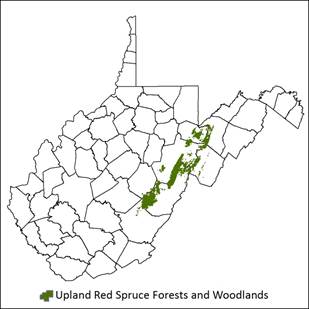
Classification
NatureServe Ecological System: Central and Southern Appalachian Spruce-Fir Forest.
Five globally rare Associations of the U. S. National Vegetation Classification occur in West Virginia. Click on the links for more information on each Association.
| USNVC Association WV Scientific Name [Common Name] | Code | G Rank | S Rank | Links |
| Picea rubens – Tsuga canadensis – Fagus grandifolia / Dryopteris intermedia Forest [red spruce – hemlock – beech forest] | CEGL006029 | G3 | S3 | USNVC |
| Picea rubens – (Tsuga canadensis) / Rhododendron maximum Forest [red spruce – rhododendron forest] | CEGL006152 | G2G3 | S2 | USNVC |
| Picea rubens / Betula alleghaniensis / Bazzania trilobata Forest [red spruce – yellow birch forest] | CEGL008501 | G2 | S2 | USNVC |
| Picea rubens / Kalmia latifolia – Menziesia pilosa Woodland [red spruce – heath rocky woodland] | CEGL006254 | G2 | S1 | USNVC |
| Picea rubens / Vaccinium erythrocarpum / Dryopteris campyloptera Forest [red spruce – southern mountain cranberry forest] | CEGL007131 | G2 | S1 | USNVC |
Key to Associations
- Woodland physiognomy: total cover by trees <60%. Rocky woodland with at least 1% cover of Vaccinium angustifolium and Menziesia pilosa. Lichens, especially Umbilicaria muehlenbergii, present on rocks. Occurs on west-facing slopes along the Allegheny Front. = Picea rubens / Kalmia latifolia – Menzisia pilosa Woodland (red spruce – heath rocky woodland)
- Forest physiognomy: total cover by trees >60%.
- Shrub layer has >30% cover of Rhododendron maximum. = Picea rubens – (Tsuga canadensis) / Rhododendron maximum Forest (red spruce – rhododendron forest)
- Shrub layer has <30% cover of Rhododendron maximum.
- Shrub layer has >10% cover of Vaccinium erythrocarpum. This type is restricted to the highest elevations in the red spruce zone. = Picea rubens / Vaccinium erythrocarpum / Dryopteris campyloptera Forest (red spruce – southern mountain cranberry forest)
- Shrub layer has <10% cover of Vaccinium erythrocarpum.
- Picea rubens accounts for half or more of the total canopy/subcanopy cover; however, if Betula alleghaniensis is the only other canopy/subcanopy species, Picea rubens cover may be as low as one-third of total canopy/subcanopy. Herbaceous cover generally <15% and bryophyte cover generally >30%. This is the most common red spruce type above 3600 ft (1100 m) elevation in West Virginia. = Picea rubens / Betula alleghaniensis var. alleghaniensis / Bazzania trilobata Forest (red spruce – yellow birch forest)
- Picea rubens cover accounts for less than half of the total canopy/subcanopy. Herbaceous cover generally >15% and bryophyte cover generally <30%. This is a transitional type between red spruce and northern hardwoods, sometimes with red spruce coming up in the understory. It occurs at lower elevations in the red spruce zone, and also on richer shale substrates at high elevations. = Picea rubens – Tsuga canadensis – Fagus grandifolia / Dryopteris intermedia Forest (red spruce – hemlock – beech forest)


